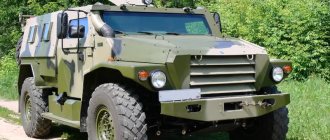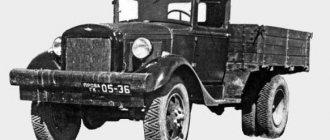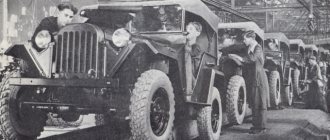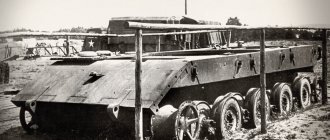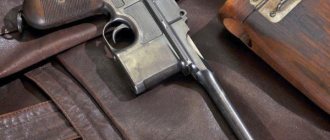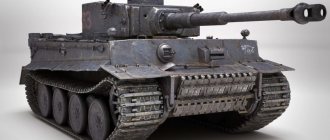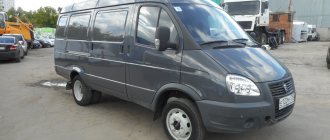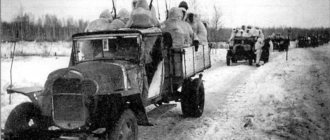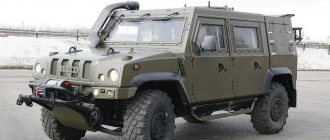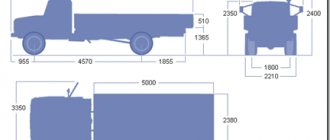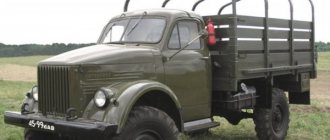The Kubelwagen is perhaps the most famous all-terrain convertible from World War II and a symbol of simplicity, economy and practicality. Officially, the car was called VW Typ 82, and received the nickname Kubelwagen (German - tub) from the military for its resemblance to a washing basin.
History of creation
The appearance of the Kubelwagen is closely connected with the name of the Fuhrer. Adolf Hitler immediately after taking office as chancellor announced the total motorization of the country. He promised that he would provide every German family with their own transport, and to implement his grandiose plans he attracted the well-known designer Ferdinand Porsche.
The "people's car" developed by Porsche appeared in 1937 and received the unofficial name "Beetle" . It featured compact suspension, a stamped frame and a four-speed transmission, which was a huge achievement at the time.
On September 16, 1938, Volkswagen was officially founded. Since 1939, the plant was repurposed for the production of military equipment and until 1945 it actively produced light army convertibles, including the Kubelwagen.
The Kubelwagen chassis is a tube made of a special alloy, to which the front and rear axles are welded, as well as a stamped ribbed floor. The car body had flat sides with horizontal stiffening ribs and, if necessary, was covered with a tarpaulin. Four short doors opened in different directions, and a spare tire was installed on the flat front part, which externally resembles a wedge. The car was equipped with air heating for passengers.
1 of 2
Kubelwagen German car kubelwagen type 82 photo
Kubelwagen German car kubelwagen type 82 photo , for its high reliability and excellent survivability, received the respectful nickname “German camel” from Wehrmacht soldiers.
After the Nazis came to power in Germany, the thesis that every German should have their own car was adopted as the main idea of civil motorization. At the 1934 automobile exhibition in Berlin, the idea of a “people's car” took final shape.
The commander of the 10th SS Division "Frundsberg", Brigadeführer Heinrich Heinz Arthur Harmel, in a Kübelwagen Type 82 on the street of a Norman town
In February 1936, Professor Ferdinand Porsche demonstrated his Volkswagen (literally, “people’s car”), at least that’s what Internet users write. In fact, it had a completely different name Kraft durch Freude , translated as “Strength through joy.” I liked the car. For its production, a new association, Volkswagen GmbH, was created, which received 50 million marks from the state. And a social program was promoted, purely in the Soviet style, save 5 marks a week from your salary and you will ride in a car. About 340,000 people contributed. During tests that took place in the same year, the car covered 50 thousand km. At the same time, work was underway to prepare for serial production and the construction of a plant designed to produce 500 thousand cars per year.
"Kübelwagen". Eastern Front, June 21, 1943
By September 1, 1939, only 210 civilian Volkswagen cars, better known as the Volkswagen Beetle, had been produced. The Second World War began, and all plans for the “people's car” became waste paper; the cars produced went to high-ranking party functionaries. Interestingly, after the war, investors tried to sue the invested money. You yourself know that the attitude towards money over the hill is very reverent. But confusion began immediately about who owed money to Porsche or Volkswagen. In the end, Volkswagen had to take the rap; investors won a discount on the purchase of a new car from this concern, of course.
"Kübelwagen" Type 82, soldiers of the SS division "Leibstandarte Adolf Hitler" are trying to drag a car out of mud captivity
The time has come for military variants of Volkswagen. The idea of the possibility of military use of the new car appeared at Porsche back in 1934. And on February 1, 1938, the Wehrmacht Armament Directorate issued an order for the construction of a prototype of an army light vehicle. Nine months later, Porsche presented the military with a light all-terrain vehicle, the Kübelsitzwagen, designed to carry four armed soldiers. Subsequently, a shorter name was used - “Kübelwagen”. It arose due to the bucket-shaped shape of the car seats, and it is not entirely clear why the translation “car-pelvis” (“kübel” translated from German as “bucket”) was adopted in our press by someone’s light hand. Long-term tests of the car showed that it was significantly superior to all other Wehrmacht passenger cars, despite the lack of front-wheel drive.
A destroyed column of German equipment, most likely the work of attack aircraft, no craters from aerial bombs are visible, in the foreground are SS men in a Kubelwagen
Kübelwagen German car kubelwagen type 82 photo , VW 82 Kfz.l was in production until 1945. , 50,435 copies were produced . In addition, 564 VW 87 (4 x 4 limousine) were produced and handed over to the Afrika Korps, while 667 VW 82 and VW 92 (4 x 2 limousine) were of the original civilian design. Kfz.l was supplied to all branches of the German armed forces. Its ownership can be easily determined by the letters on the car's license plate. So, the letters stood for
- WH Wehrmacht affiliation
- WL - to the Luftwaffe
- WM - to the Kriegsmarine
- and OT - to the Todt organization.
Kübelwagen German car kubelwagen type 82 photo , had a four-door all-metal welded body with a folding canvas top. The role of the frame was performed by the body itself and the tubular power central beam. The wheel suspension is torsion bar, the brakes are mechanical on all wheels, including manual. The car was equipped with a four-stroke, four-cylinder horizontally opposed carburetor engine. Until 1943, the engine cylinders had a diameter of 70 mm, a piston stroke of 64 mm, a working volume of 985 cm3, and a power of 17.2 kW. On machines produced later, the cylinder diameter increased to 75 mm, the working volume to 1131 cm3, and the power increased to 18.3 kW. The VW 82 Kfz.l engine was equipped with a Solex 26VFJ carburetor. Kübelwagen German car kubelwagen type 82 photo history in dates
- 1936 First demonstration of the Beetle.
- 1938 The prototype of the military version appears.
- In 1939, the Kübelwagen was first demonstrated to the public under the designation Type 62.
- 1940 The production model, Type 82 Kfz.l, went into production.
- 1945 Completion of production.
The transmission included a single-disc mechanically controlled clutch and a four-speed gearbox (4+1), which together with the differential was one mounting unit. To increase cross-country ability, a lower first gear and a locked rear axle differential were used. The total weight of the car was 1175 kg. The gasoline tank held 40 liters of fuel. The maximum speed was 80 km/h, and the specific fuel consumption was 9 liters per 100 km when driving on the highway.
The Schwimmwagen car (Volkswagen Type 166 Schwimmwagen) and Panther tanks of the SS division Leibstandarte Adolf Hitler. At the wheel is SS-Hauptsturmführer Gustav Knittel.
All-wheel drive amphibious vehicle type 166 Schwimmwagen, the brainchild of Ferdinand Porsche and Erwin Komend
The Kübelwagen VW-82 is built on units of the same Porsche Beetle. All-wheel drive independent suspension, 1.1 liter engine, air-cooled flat-four, 25 hp
All-wheel drive amphibian type 166 photo
"Kübelwagen" was produced in several versions, including connected with a walkie-talkie and in the form of a repair "flight". Experimental vehicles were also made with the rear wheel replaced by a small caterpillar; with widened wheels for driving on snow; with elongated axles for movement on a railway track, with removable skis that were attached to the front wheels. It is quite obvious that these designs were brought to life by the monstrous impassability of the Eastern Front. The Kübelwagen became the best German passenger army vehicle of the Second World War. Despite the lack of all-wheel drive, it showed quite decent all-terrain capability, and in addition, it was easy to maintain and operate. For its high reliability and survivability (the car could only be destroyed by a direct hit), it earned the respectful nickname from Wehrmacht soldiers - “German camel”.
American paratroopers in a captured German Kübelwagen. Normandy, June 12-14, 1944
Kübelwagen Type 82 Volkswagen Tour 82 which is carefully studied by soldiers of the US 75th Infantry Division
The vehicle was quite readily used as a trophy by both the Red Army and Allied troops. After the defeat of Germany, production of the VW 82 ceased, partly as unnecessary, partly due to the fact that the plant was bombed by Allied aircraft. After the restoration of the enterprise, the well-known civilian Volkswagen Beetle began to roll off its assembly lines. But for a long time on European roads one could still find “cubels” that were in private use. And in Mexico, until very recently, the VW 181 was produced - an almost complete analogue of the “German camel”.
Story
Kübelwagen
on the Eastern Front in 1943.
Although Adolf Hitler discussed with Ferdinand Porsche the possibility of military use of the Volkswagen as early as April 1934, it was not until January 1938 that senior officials of the Third Reich officially commissioned Porsche to develop a lightweight military transport vehicle that was inexpensive and economical. which could be used reliably both on and off the road, even in the most extreme conditions. This meant that KdF could serve as the basis for such a machine.
Porsche began work on the project immediately, aiming to have a prototype car ready within a month, but realized during development that the KdF chassis reinforcements would not be enough to withstand the loads of military use. He concluded that to provide adequate off-road performance for a two-wheel drive vehicle with a 1000 cc engine. See it should be very light. In fact, the Army stipulated a maximum weight of 950 kg, including four soldiers carrying their full military equipment (backpacks, weapons, man-portable machine guns, ammunition, etc.), which meant that the vehicle itself could not weigh more than 550 kg. . So Porsche has outsourced Trutz, a coachbuilder with military experience, to help you with your body design.
type 62
Testing of the prototypes, designated Type 62, began in November 1938. Despite the lack of all-wheel drive (a mainstay of the North American Jeep), the vehicle proved quite capable of maneuvering over rough terrain (even in direct comparison with modern four-wheel drive vehicles). combat vehicles). The project has received the green light to complete development. The car's light weight and limited-slip differential compensated for the lack of all-wheel drive capabilities.
Further development of the Typ 62 occurred in 1939, including a more angular hull design. Pre-production models were field tested during the invasion of Poland, which began in September of that year. Despite general satisfaction with the vehicle's performance, military leaders demanded major changes: for example, the vehicle's minimum speed had to be reduced from 8 km/h to 4 km/h to match the tank's marching pace. soldiers. Secondly, some improvement was required in its off-road capabilities. Porsche responded to both requests by installing new portal gear shafts, which finally increased the car's torque and increased ground clearance. revised shock absorbers, 16-inch wheels and a limited-slip differential, as well as many other minor modifications rounded out the new features. To reflect the changes, the vehicle was renamed Typ 82.
Type 82
Large-scale production of the Kübelwagen Typ 82 began in February 1940, as soon as the VW factories became operational. There were no major changes until production ceased in 1945; Only minor modifications were made, mainly to remove unnecessary parts and strengthen some weak points. Versions of the prototype were prepared with four-wheel drive (Typ 87) and different engines, but none offered a significant increase in performance or quality over the existing Typ 82. From March 1943 the car received an update with a slightly larger engine (1131 cc . cm), developed for Schwimmwagen, which improved the torque and power of the original 985 cc unit. When Volkswagen production ceased at the end of the war, only 50 vehicles were produced.435 Volkswagen Type 82 Kübelwagen,[1] and the vehicle proved to be surprisingly useful, reliable and durable.
Volkswagen Safari Later developments
Long after the end of the war, VW revived the basic Kübelwagen design. In 1969 the company released the Type 181, developed for the German Federal Armed Forces and later also produced for the civilian market, known as the "Thing" in the US, the "Trekker" in the UK and the "Safari" in Mexico. . Although similar in appearance and design, almost none of its components are interchangeable with the Type 82.
Yuri Pasholok. Kübelwagen in Italian
Home » Cars » Yuri Pasholok. Kübelwagen in Italian
Cars
byakin 12/14/2021 562 0 comments
16
in Favoritesin Favoritesfrom Favorites 8
Yuri Pasholok. Kübelwagen in Italian
History of the FIAT 508 CM, a light Italian command car based on the FIAT 508 C Balilla 1100 subcompact
The Italian automobile industry was very developed even during the First World War. At first there were no special military vehicles, but even the well-known FIAT 15 ter received an army version, the FIAT-15 ter Militaire. At the same time, the Turin industrial giant paid a lot of attention to the military topic. It is enough that the Turin company SPA, which found itself under the control of FIAT in 1927, completely switched to military orders from the same year. However, FIAT itself worked quite well on military topics. FIAT trucks served in a number of armies, and the most popular Italian middle-class military truck was the FIAT 626. The Italian army, in terms of equipment, looked even better than the French. They also had several cars of the same type, however, the situation still did not look so bad. If the French had hundreds of cars, the Italians had thousands. As they say in Odessa, there are two big differences.
The first prototype of the FIAT 508 CM, still with a two-seater body
At the same time, there was a segment of the Italian automotive industry that was in a neglected state. Oddly enough, we were talking about cars. There is nothing surprising in this, since army passenger cars were a low priority in other armies of the world. How many British special army command vehicles do you know, especially from the interwar period? What about the French? So the Italians had a different priority for cars. First, it was necessary to saturate the army with modern trucks and tractors, and only then do something else. So the approach turned out to be very similar to the German one. In 1932, the FIAT 508 M (Militare), a two-seater light command vehicle based on a civilian passenger car, appeared. It was produced in two series, differing in the basic chassis. There were also several variants of the vehicle, including a cargo-passenger version. The concept of the “Italian Kübelwagen” was tested on this car, which was further developed according to an already proven scenario.
An intermediate option, also rejected. Both cars already had a redesigned chassis
In 1937, production of the new FIAT 508 model began. It was designated FIAT 508 C Balilla 1100. The number 1100 meant engine capacity (1089 cubic centimeters). The car became larger than its predecessor, and the standard body was a 4-door sedan. Of course, when creating this purely civilian machine, there were also thoughts about its military purpose. However, this time FIAT approached the issue more comprehensively than in the case of the FIAT 508 M. If in the first case they simply installed a new body, now work was also carried out on the chassis. As a result, a specialized light command vehicle was born. It received the designation FIAT 508 CM (FIAT 508 C Militare), becoming the most popular Italian command vehicle.
This is how the car turned out in the final version
It must be said that the original appearance of the car was very different from the final one. At first, FIAT created a complete ideological descendant of the FIAT 508 M, that is, a 2-seater convertible, with a design that was completely identical to a civilian car. The car had a large trunk, but the military, who received the car in 1937, expressed a desire for a slightly different car. However, already at this stage the car was different from the civilian model. Ground clearance increased from 170 to 234 mm, which was a very good argument when driving off-road. The next step was the creation in 1938 of the Torpedo Militare Coloniale version. The body still resembled a civilian one, but with 4 doors. However, CSM was not satisfied with this version either. Something more utilitarian was required, plus there were complaints about the functionality of the Torpedo Militare Coloniale. As a result, the factory design bureau under the leadership of Dante Giacosa created the machine, which was put into production.
After installing the soft top. In the removed position, the door sides were retracted into the trunk
Presented in July 1938, the car was significantly different from its progenitor. In terms of the level of differences, the car is quite comparable to how Porsche KG converted Volkswagen into Typ 82. Even the engine was rebuilt a little differently, becoming less powerful, but more torquey. However, the difference in horsepower seemed insignificant. The 30-horsepower FIAT tipo 108C engine was quite enough for the tasks for which the car was created. With a mass of 930 kg (total weight 1152 kg), the specific power was quite decent. The engine received an electric fuel pump, and the chassis itself turned out to be highly modified. If the civilian FIAT 508 C received 15-inch wheels, then the military chassis had 18-inch wheels. The volume of the fuel tank was increased from 32 to 40 liters, and the car itself became longer. In a word, never “ersatz”. Yes, with only rear-wheel drive, but there is no question of simply modifying the civilian chassis. The car became a little slower, but due to modifications to the chassis, the cross-country ability was noticeably higher.
FIAT 508 CM chassis structure. Civil basis, but there were enough improvements
Not a single element remained of the civilian body. Even the hood and front fenders were completely redone. The body turned out to be simplified, but not without grace. German square wooden boxes covered with tin were far from the FIAT 508 CM. However, it cannot be said that the Italians were perfectionists. All decisions were strictly to the point, but not as clumsy as the Germans did. Even the doors looked like a full-fledged structure, and not a very primitive-looking (but very complex in design) thing.
The closest analogue of the car was the German Typ 82, although the Mercedes-Benz 170 VK was probably closer. The Italian car was more elegant compared to them
There were some unusual solutions: the Italian command vehicle did not have handles for opening the doors from the outside. However, with a phaeton body this is not a problem. The soft top was implemented quite successfully, which, by the way, also turned out to be very neat. In a word, if you want to see an example of the correct approach to making a military vehicle from a civilian one, then the FIAT 508 CM is perhaps the best example.
The result was a quite successful command vehicle
Production of the FIAT 508 CM began in 1939. Unlike its predecessor, the car was produced with only one body option - a 4-door sedan. FIAT produced the pickup truck separately, and we were talking about a completely different car, worthy of a separate story. But what was already based on the sedan itself is a different matter. To begin with, there was a modified version of the car, which was called the FIAT 508 C Coloniale. It received fatter tires on 16-inch wheels, since sand requires different wheels. Mounts for canisters also appeared, and the fuel supply increased to 70 liters. The range has also increased - up to 570 kilometers (from the standard 320). A searchlight, cable and other equipment could be attached. And at the same time, a swivel for the Breda 30 machine gun. Quite a serious device for operations in the desert.
Coloniale variant for desert operations. Different wheels, cans, increased fuel supply. And a machine gun
There was also a special version of the standard FIAT 508 CM. The car was also supposed to act as a communications vehicle, which meant the presence of a radio station. This is how the radio version of the machine appeared, equivalent to the German modification Kfz.3. The radio station was located in the trunk, and the antenna was located on its roof, plus on the front part of the hood. There are also air vents on the sides of the trunk. The design of the antenna is a little strange, it looks more like placing a radio station on an airplane.
Radium version of the machine
The FIAT 508 CM could be seen wherever Italian troops were present. This was facilitated by a very large series: from 1939 to 1945, about 6,000 vehicles were built, of which the last ones (1944-45 years of production) were already supplied to the Germans. There was also a special version of the car, built in an edition of 50 pieces. It was called FIAT 508CM Berlina FO. FO stood for Fronte Orientale, that is, Eastern Front. It appeared in December 1941 after the Italians met General Frost. By and large, this is a completely different car, which received a new body and hood, as well as a stove.
FIAT 508CM Berlina FO, it was made with a FIAT 1100A body
The main part of the FIAT 508 CM that fought with us was the most ordinary. Naturally, the lack of all-wheel drive and the standard tire tread clearly did not contribute to increased cross-country ability. Nevertheless, compared to ordinary passenger cars, the Italian Kübelwagen looked quite up to par. Later, some of them were lost at Stalingrad, some became trophies. They even sometimes appear in films.
On the Soviet-German front, 1942
After Germany occupied part of Italy in September 1943, the FIAT 508 CM also fell into German hands. They were used for their intended purpose. The roads in Italy were quite good, so the car coped with its duties. After the end of the war, the vehicles continued to serve in the army for some time, and then they were slowly written off.
Duce didn’t disdain Fiat either
I must say that the Fiat 508 CM turned out to be very durable. It’s not that many of them have survived, but compared to other Italian command vehicles, the difference is obvious. In Italy itself there are about a dozen of these machines, and there are them in other countries as well. At least a couple of cars ended up in Russia. One is in the “Trophy Cars” collection of Maxim Zubarev, the second is at the “Motors of War” exhibition. You can see them on the move, and these cars drive quite well. The main thing to remember is that this is still not a jeep.
FIAT 508 CM on “Motors of War”
In conclusion, it is worth saying once again that the FIAT design bureau has created the optimal car based on a civilian chassis. The Italians were not too lazy to significantly rework the base, creating, if not an SUV, then certainly an all-terrain vehicle. The car is utilitarian, but not without grace. Subsequently, the Fiat 508 CM concept served as the basis for several more Kübelwagens, much less well known.
List of sources:
- Gli autoveicoli tattici e logistici del Regio Esercito Italiano fino al 1943 Tomo II, Licola Pignato, Flippo Cappellano, 2005
- Fiat 508 CM (Notiziario Modellistico), GMT
source: https://zen.yandex.ru/media/yuripasholok/kiubelvagen-poitalianski-61b341b187b1ae3a98534d53?&
Specifications
VW Typ 82 with engine visible in Sicily (1943) "Portal axle" gearbox in the Kdf 82
When the first vehicles were delivered to the German Army, they were immediately tested on and off snowy and icy roads to assess their ability move in European winters. Various four-wheel drive vehicles were used as references. Even though the Kübelwagen only had two-wheel drive, it surprised even those involved in its development, as it outperformed the other cars in almost every test. In particular, thanks to its smooth, flat underbody profile, the Kübel pulled like a motor sled when its wheels got stuck in sand, snow or mud, allowing it to follow tracked vehicles with ease.
In November 1943, the United States Army conducted a series of tests on several Typ 82s they had captured in North Africa. The US Army Manual TM-E for the German Armed Forces (March 15, 1945, p. 416) stated that “The Volkswagen, the German equivalent of the Jeep, is inferior in every respect except the comfort of its seats.”
.
At the same time, another Kübelwagen, also captured in North Africa, was "opened up" in Britain by engineers from the Humber automobile company, whose report was equally unfavorable and dismissive. [2]
Among the design features that contributed to the Kübelwagen's performance were:
- Its light weight; despite being approximately 41cm longer than the Willys MB, it was approximately 300kg lighter.
- The Kübelwagen could reach a top speed of 80 km/h.
- The chassis is separated from the body. The body frame did not support the structural load of the car, so it could be easily modified for special purposes. The flat bottom underneath the body allowed the car to slide over the surface it was traveling on if necessary.
- Rear engine from a Volkswagen Beetle. The air-cooled engine proved to be very efficient in both hot and cold climates and was less vulnerable to bullets and/or shrapnel due to the lack of a radiator. For starting in extremely cold conditions, a particularly volatile fuel (ether) was used, contained in a small auxiliary fuel tank.
- Independent suspension; the rear engine location implied the use of an independent rear suspension (due to swing axles), since the engine-gearbox assembly is fixed to the chassis and represents a sprung mass. The front suspension, also independent, has been adapted for off-road use.
- Considerable ground clearance, approximately 28 cm. To increase ground clearance, swing axles were connected to portal axles, which provided more torque and increased ground clearance. The independent front suspension has also been raised.
- Self-locking differential that limits slip and improves traction.
Volkswagen Type 82
Volkswagen Kubelwagen (LIM 111).
Kübelwagen in its
The final configuration (Typ 82) featured a lightweight body mounted on a chassis consisting of a central rigid tube with axle anchors at each end, all of pressed sheet metal.
This low-cost manufacturing design provided rigidity, lightness, and simplicity of design. All four wheels had an independent torsion bar suspension. It had a 985cc air-cooled engine. cm, which gave him a power of 23.5 horsepower. This engine, in addition to being reliable and easy to repair, made the Kübelwagen
particularly effective both in the extremely cold conditions of the Eastern Front and in North Africa, where water for radiators was scarce.
It is not surprising that one of the arguments in its favor was that “the air does not boil and does not freeze
.
Its qualities contributed to the rapid advance of German troops on all fronts during the Second World War, and especially to the Afrika Korps of General Erwin Rommel, who already sensed the enormous capabilities of this small machine from the very beginning of the war in Poland. France.
